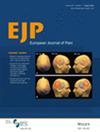Prevalence of Temporomandibular Disorder Symptoms After Whiplash Trauma—A Systematic Review and Meta-Analysis
Abstract
Background and Objectives
Temporomandibular disorders (TMDs) is an umbrella term for pain and dysfunction involving jaw muscles and/or the temporomandibular joint, with whiplash trauma suggested to be one risk factor. The aim was to evaluate prevalence and relative risk of TMDs in the acute and chronic stages after whiplash trauma.
Databases and Data Treatment
This review was registered in Prospero (CRD42023407091) and followed the PRISMA guidelines. A literature search in PubMed, Scopus and Web of Science on 10 March 2023 and updated 29 April 2024 identified studies reporting prevalence of TMD after whiplash trauma. Risk of bias was assessed with Joanna Briggs Institute Prevalence Critical Appraisal Tool. A random effect meta-analysis was performed for prevalence of TMD pain.
Results
After screening of 671 identified studies, 96 articles were assessed in full text. Fourteen studies, with 840 cases in the acute and 8293 cases in the chronic stage (i.e., > 3 months post-trauma) were included in a qualitative analysis together with 1591 controls. Nine studies, including 449 cases in the acute and 7912 individuals in the chronic stage after trauma, together with 515 controls, were included in the meta-analysis. Mean prevalence for TMD pain was 18.9% (95% CI 9.71–29.98) in the acute case group, 26.8% (95% CI 15.07–38.79) in the chronic case group, and 5.7% (95% CI 3.08–8.96) in the control group.
Conclusions
The higher prevalence of TMD pain already in the early stage after whiplash trauma, emphasises the need for early comprehensive clinical assessment as well as targeted research to understand underlying mechanisms.
Significance
The prevalence of Temporomandibular disorder pain was high already in the acute stage after whiplash trauma, and there was no evidence of any decrease from the acute to the chronic stage. This finding suggests that early assessment and management rather than a 'wait-and see' approach should be recommended when patients present with orofacial pain related to whiplash trauma.


 求助内容:
求助内容: 应助结果提醒方式:
应助结果提醒方式:


